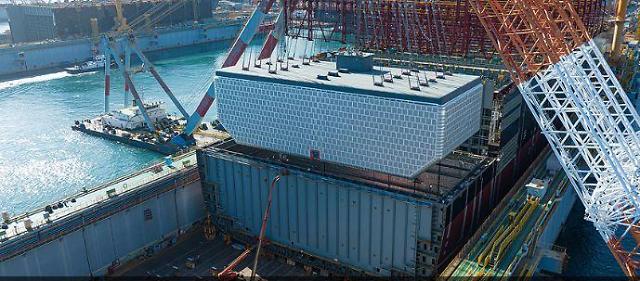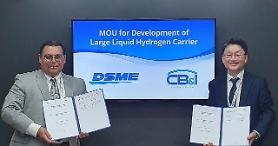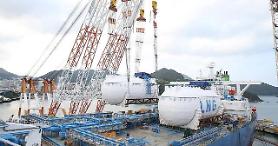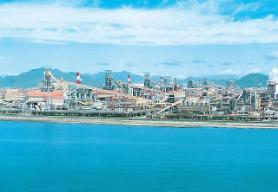
[Courtesy of DSME]
SEOUL -- A liquefied natural gas fuel tank made of high manganese steel has been installed on a giant container carrier under construction at South Korea's Daewoo shipyard. This is the world's first dual fuel-powered container carrier carrying an LNG fuel tank using high manganese steel, which is an alternative material for cryogenic services.
Daewoo Shipbuilding & Marine Engineering (DSME) said that a square-shaped high-manganese steel LNG fuel tank has been mounted inside a 24,000 TEU dual-fuel propulsion container. The twenty-foot equivalent unit (TEU) is an inexact unit of cargo capacity often used to describe the capacity of container ships.
The International Maritime Organization (IMO), a U.N. maritime safety agency, has adopted mandatory energy-efficiency measures to reduce emissions of greenhouse gases from ships. A dual-fuel propulsion system capable of using LNG or liquid fuels discharges little sulfur oxide (SOx) emissions.
DSME has worked with the research center of South Korea's steel group POSCO to apply high manganese steel to tank manufacturing. The shipbuilder delivered two super-large crude oil carriers installed with high manganese steel LNG storage tanks to its client in September. POSCO's high manganese steel is cost-effective and showed superiority over existing cryogenic materials in terms of elongation and ultimate tensile strength.
LNG storage tanks are designed to prevent vaporization by blocking heat transfer and stop the hull from being damaged by exposure to cryogenic temperatures. Until now, cargo tanks and fuel tanks that withstand cryogenic LNG have been made of expensive nickel alloy steel, aluminum, and stainless steel. High manganese steel is cheaper and has higher strength and wear resistance as well as better performance at extremely low temperatures.
The state-run Korea Institute of Machinery and Materials (KIMM) has teamed up with POSCO and other private companies to develop a liquid hydrogen storage tank using high manganese steel, which is easier to weld and has lower manufacturing costs than stainless steel. The liquefaction of hydrogen requires cooling to a temperature of minus 253 degrees Celsius and subsequent storage in cryogenic containers.
Copyright ⓒ Aju Press All rights reserved.



